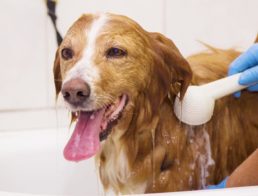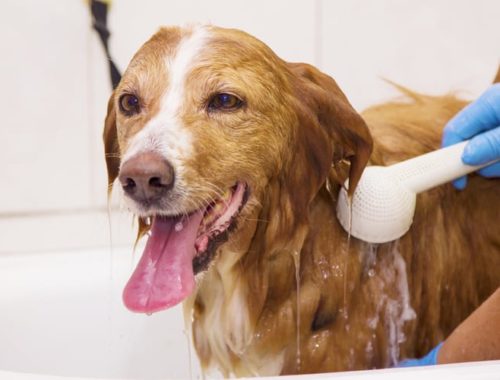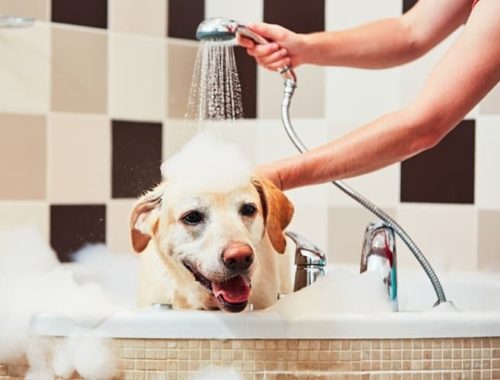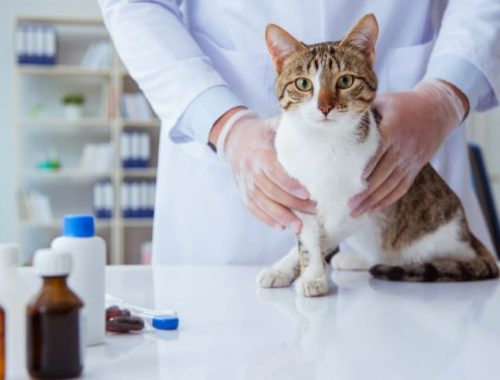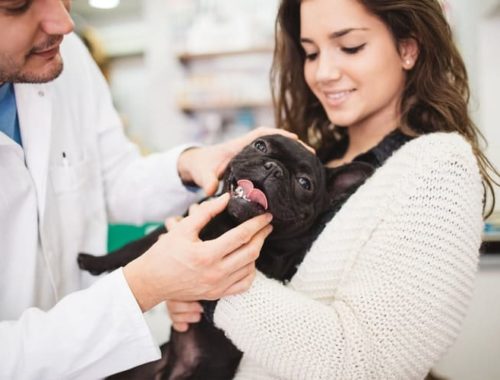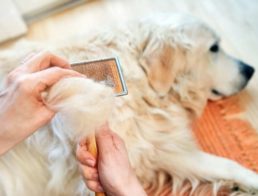We may not think about the health of our furry friend’s paws that often, but if you’ve ever had a dog who suffered from constantly cracking paws, you know how detrimental it can be for them.
While many cracked paw issues are simple enough to resolve, others can indicate a deeper health-related issue that needs to be addressed immediately.
So let’s take a look at what causes cracked paws in dogs and what you can do to help prevent them from happening throughout the entire year.
Cracked Paws are More Common Than You May Think
Were you aware that small paw cracks in dogs will often develop and quickly disappear before we’ve even detected them? And all this without treatment? Fortunately, a dog’s paw pads are designed to heal quickly. If you’ve ever felt them, you know how tough and durable they are.
However, when they fail to heal on their own, they’re extremely painful and need to be treated immediately before they impact your dog’s long-term health. Because of this, it’s imperative that you give their pads all the attention and love they need.
Cold Climates Can Do a Number On Paw Pads
In colder climates, cracking and chafing happen quite regularly. When this occurs, avoid the use of lotions or moisturizers that are designed for humans. These will do more damage by softening your dog’s pads, making them even more sensitive and prone to cracking.
Instead, look for topical creams that are made specifically for dogs. Waxes, balms and thick moisturizers are great options to keep the natural moisture in your pet’s paws and ensure no outside irritants can penetrate in the cracks.
If you want to take it a step further, and your dog is able to walk in them, invest in a pair of winter booties. There are numerous options on the market made for all types of weather conditions. Fair warning, putting them on for the first time may be a funny video moment as many dogs require a few practice runs before getting a hang of walking in these boots.
Cold weather creates other issues for your dog’s precious pads, too. When you head out for long walks in the winter, water can freeze between your dog’s toes and pads, creating small balls of ice and snow that make the intense pain felt from the existing cracks that much more severe.
Road salt and other chemical agents used on icy sidewalks also worsen cracked paws, so make sure to wipe your dog’s paws with a warm cloth immediately after returning home from a walk. This will remove those chemicals. And as an added bonus, clean doggie paws go a long way towards keeping your carpeting and floors clean as well.
Another helpful solution is to apply petroleum jelly between the toes to help keep ice and snow from binding to their paw fur.
When it comes to cold or wet climates, it’s important to keep an eye on the skin surrounding the paw itself as irritated skin and open wounds may develop if not properly treated.
If you notice open sores and puss around on the skin, consulting your vet is key to ensure that this wound doesn’t develop into an infection or is not a result of a skin condition.
What to Do If the Paw Pads Start Bleeding
Sometimes, you can do everything right to avoid cracked paws, but it’s still not enough. Dogs come into a lot of hazards that we may not even see. Thorns, sharp outdoor objects, and icy walkways are just a few of them.
If you notice blood on your dog’s pads, immediately start soaking them in a warm solution of water and Epsom salts. Make sure the salt is properly diluted according to the instructions on the package and stop soaking after approximately 10 minutes,
Next, dry the paws carefully with a clean, dry towel. As an alternative, you could instead use a hair dryer set to the lowest possible setting.
If this stops the bleeding and the crack is shallow, put a small sock over the affected paw and keep an eye on your pet to make sure he or she doesn’t pull it off or chew through it.
If this doesn’t stop the bleeding or you notice that the crack is actually quite deep, get your dog to the vet as soon as you can. Your pet may be in a lot of pain and require antibiotics.
Remember to avoid putting on bandages yourself if you can help it. When feasible, it’s always better to leave it to your vet. It’s just too easy to accidentally over-tighten a bandage and cut off circulation.
What If My Dog’s Paws Keep Cracking?
If you’re always noticing your dog has cracked paws, he or she might have a health issue that requires a vet’s attention.
Chronically cracked paws can be caused by:
• Liver issues
• Allergies
• Endocrine issues
• Autoimmune deficiencies
• Diabetes
• Others
Talk to your vet and have them conduct a few tests to see if your dog is suffering from any of them.
Final Thoughts
With something as important as your dog’s health, it’s always smarter to err on the side of caution. Don’t hesitate to call your vet if you need help caring for cracked paws or are worried your pet may be suffering from deeper health-related issues.







